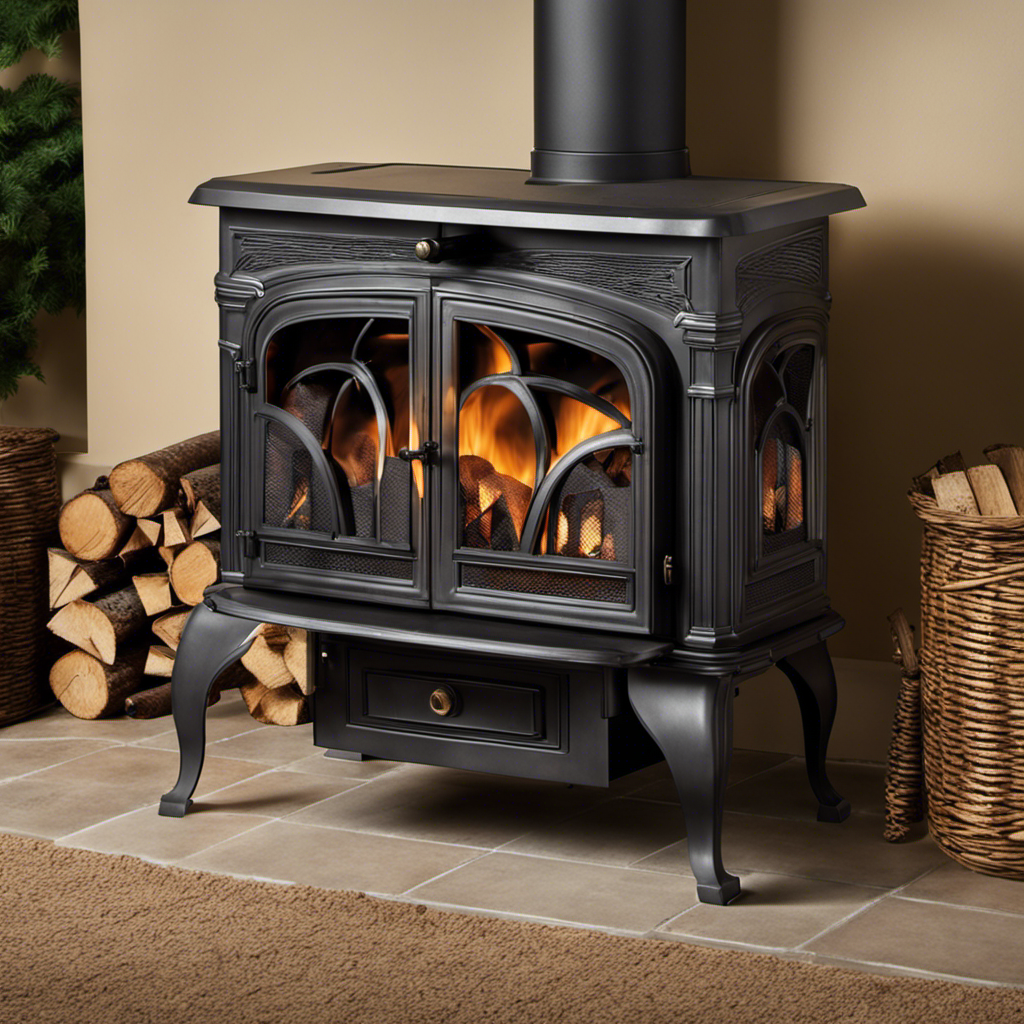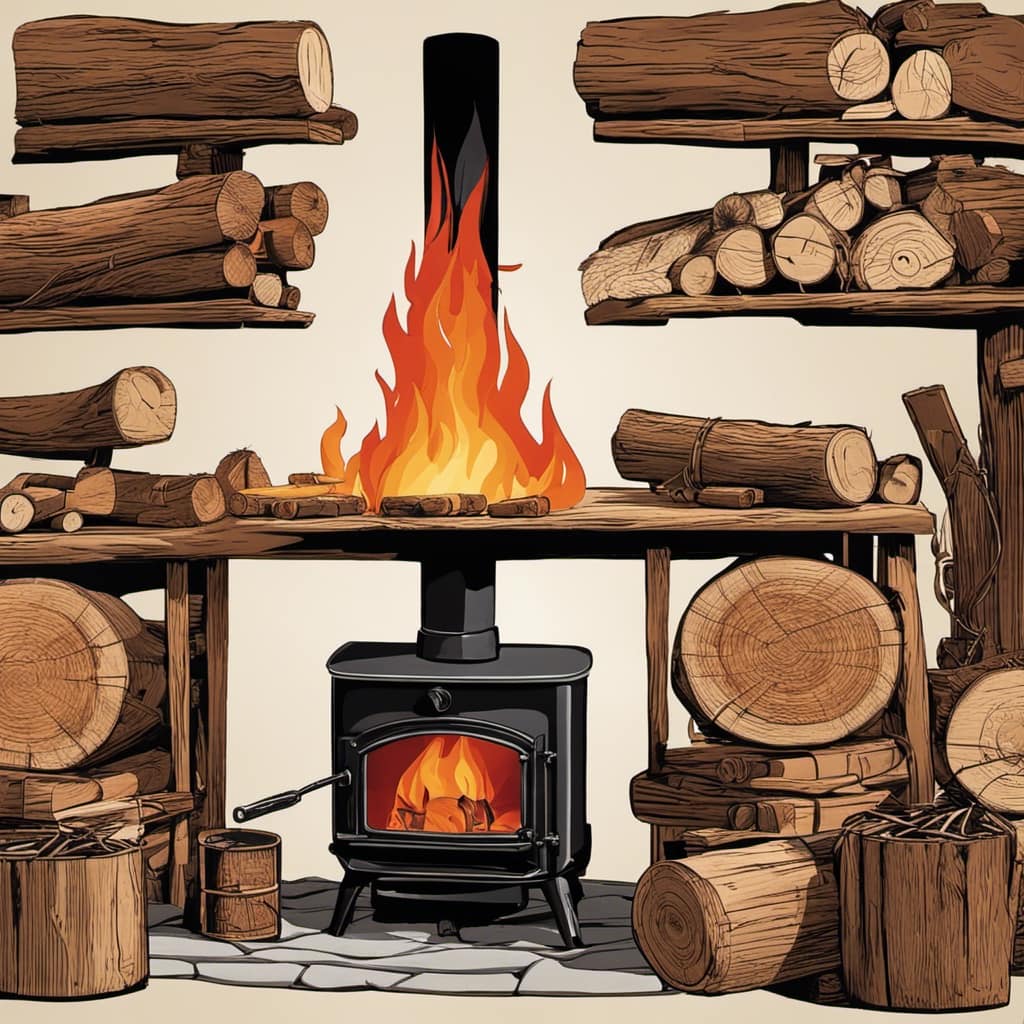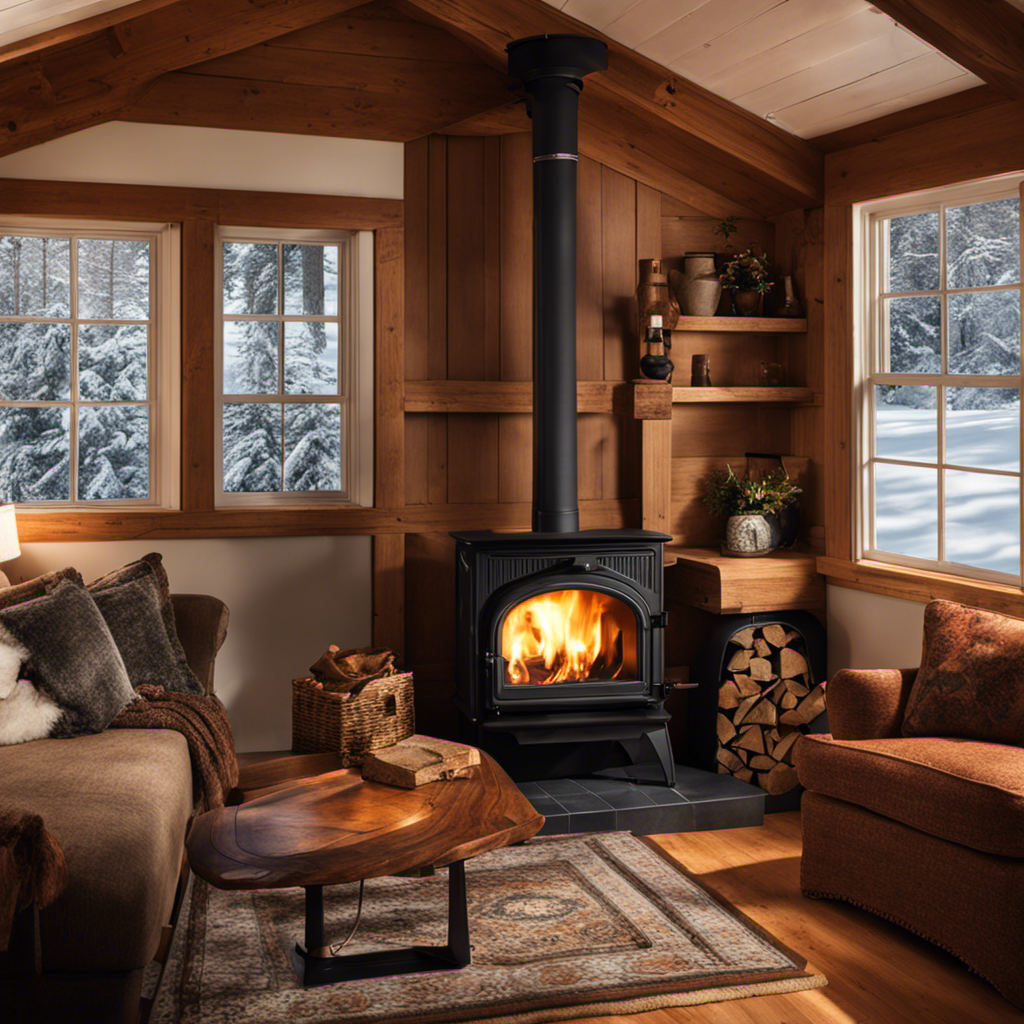I’ve always been curious about why my wood stove produces such high levels of heat.
As an avid wood burner, I’ve delved into the science behind it all. It turns out, the combustion process, the types and quality of wood used, and the efficiency of the stove all play a crucial role in heat production.
Understanding these factors is key to maximizing the warmth and coziness that my wood stove provides.
So, let’s dive in and unravel the mysteries of what truly fuels our wood stoves.
Key Takeaways
- Combustion temperature and oxygen supply are crucial for wood stove operation.
- Oak and birch are popular wood choices for their high heat output and long burn times.
- Seasoned wood with lower moisture content burns more efficiently and produces more heat.
- Regular maintenance and proper airflow regulation are essential for maximizing the efficiency of the stove.
The Combustion Process
I can feel the heat radiating from the wood stove as it undergoes the combustion process. Combustion temperature and oxygen supply are crucial factors in this process.
The combustion temperature refers to the minimum temperature required for the fuel to ignite. For wood, this temperature is typically around 300 degrees Celsius. As the wood burns, it releases volatile gases that mix with oxygen from the air.
The oxygen supply plays a vital role in sustaining the combustion process. Sufficient oxygen ensures complete combustion, resulting in a more efficient and cleaner burn. It’s important to maintain adequate airflow to the wood stove to ensure proper oxygen supply. This can be achieved by adjusting the air vents or using a blower to promote better combustion.
Understanding the combustion process and optimizing the combustion temperature and oxygen supply can help maximize the efficiency and performance of a wood stove.
Types of Wood Used
Although there are various types of wood used in wood stoves, oak and birch are among the most popular choices due to their high heat output and long burn times.
When it comes to firewood options, oak and birch are known for their dense nature and ability to release large amounts of heat when burned. Oak, with its high energy content, provides a steady and long-lasting burn, making it an excellent choice for heating purposes.
Birch, on the other hand, ignites quickly and produces a bright flame, which adds to the aesthetic appeal of a wood stove. However, it’s crucial to consider the environmental impact of using these types of wood.
Sustainable forestry practices and properly dried wood can help reduce the carbon emissions associated with wood burning, making it more environmentally friendly.
Quality of Wood
The quality of wood can greatly impact the efficiency and heat output of my wood stove. When choosing wood for my stove, it’s important to consider whether it’s seasoned or green.
Seasoned wood has been properly dried and has a lower moisture content, typically around 20%. This allows it to burn more efficiently and produce more heat.
On the other hand, green wood has a higher moisture content, often above 50%, which can result in a smoky fire that produces less heat. It’s essential to properly season the wood before using it in the stove to maximize its efficiency.
Efficiency of the Stove
To maximize the efficiency of my stove, I should regularly clean the flue to ensure proper airflow. When the flue is clean, it allows for the proper release of smoke and gases, preventing them from lingering in the stove and reducing its efficiency.
In addition to cleaning the flue, there are several other factors to consider when aiming for optimal stove efficiency:
-
Proper insulation: Insulating your stove properly ensures that heat is retained within the stove, preventing any unnecessary loss and maximizing its heating potential.
-
Airflow control: The ability to control airflow is crucial in achieving efficient combustion. By adjusting the air intake and damper settings, you can optimize the burning process and improve the stove’s efficiency.
-
Regular maintenance: Regularly inspecting and cleaning the stove’s components, such as the baffle, firebox, and ash pan, helps maintain its efficiency and prevents any potential issues.
-
Fuel quality: Using dry, seasoned wood that’s properly sized for your stove ensures efficient burning and minimizes the formation of creosote, which can reduce efficiency and pose a fire hazard.
-
Proper operation: Following the manufacturer’s guidelines for operating your stove, such as loading it correctly and maintaining the recommended temperature range, will help maximize its efficiency and longevity.
Factors Affecting Heat Production
I can increase the heat production of my wood stove by properly controlling the airflow and adjusting the damper settings. One of the key factors that affect heat production in a wood stove is the insulation material used. Insulation materials help to retain the heat within the stove, preventing it from escaping through the walls. By choosing high-quality insulation materials, such as fire bricks or ceramic fiber boards, I can enhance the stove’s ability to generate and maintain heat.
Additionally, proper airflow is crucial for efficient heat production. By adjusting the air intake and damper settings, I can regulate the amount of oxygen that reaches the fire. This allows for complete combustion, resulting in higher heat output. It’s important to find the right balance between airflow and insulation to maximize the heat production of my wood stove.
Frequently Asked Questions
How Often Should I Clean My Wood Stove?
I clean my wood stove every 3-6 months to ensure proper maintenance. Regular cleaning helps prevent creosote buildup, which can lead to chimney fires. It’s important to follow manufacturer guidelines and use appropriate tools for effective cleaning.
What Are the Safety Precautions I Should Take When Using a Wood Stove?
When it comes to using a wood stove safely, there are a few important precautions to take. Regular wood stove maintenance is key, including cleaning the chimney and checking for any obstructions. Additionally, always use a fire screen and keep flammable materials away from the stove.
Can I Use My Wood Stove for Cooking?
Yes, you can use your wood stove for cooking. However, it’s important to ensure proper wood stove maintenance and follow safety precautions. Wood stoves can provide an alternative cooking method, but be mindful of ventilation and the type of cookware used.
Are There Any Environmental Concerns Associated With Using a Wood Stove?
Using a wood stove for cooking can raise environmental concerns. Air pollution is a major issue, as burning wood releases harmful pollutants. Additionally, the demand for firewood can contribute to deforestation, impacting ecosystems and reducing carbon sequestration.
How Can I Troubleshoot Common Issues With My Wood Stove?
To troubleshoot common issues with my wood stove, I would start by checking for proper maintenance, such as cleaning the chimney and inspecting the firebox. Identifying wood stove problems can help prevent potential hazards.
What is the Ideal Height for a Wood Stove to be Placed on Concrete?
When considering wood stove placement on concrete, it is vital to determine the ideal height. The recommended height for a wood stove is generally 16-18 inches above the floor. This allows for efficient heat distribution and easy accessibility for maintenance. However, it is advisable to consult the manufacturer’s guidelines for specific measurements and safety precautions.
Conclusion
In conclusion, understanding the factors that affect the heat production in your wood stove is crucial for efficient and effective heating.
By considering the combustion process, types and quality of wood used, and the efficiency of your stove, you can enhance the performance and maximize the heat output.
Remember, a well-maintained wood stove not only provides warmth but also creates a cozy ambiance that coincidentally brings people together, making it an ideal choice for winter nights.
Logan’s affair with adventure began in childhood. He hailed from a small town where vast forests bordered one side and endless shores stretched on the other. His days were spent exploring uncharted woods, climbing tall trees, or listening to the tales of old sailors. This early immersion in a world brimming with stories and mysteries became the foundation of his passion for writing.











